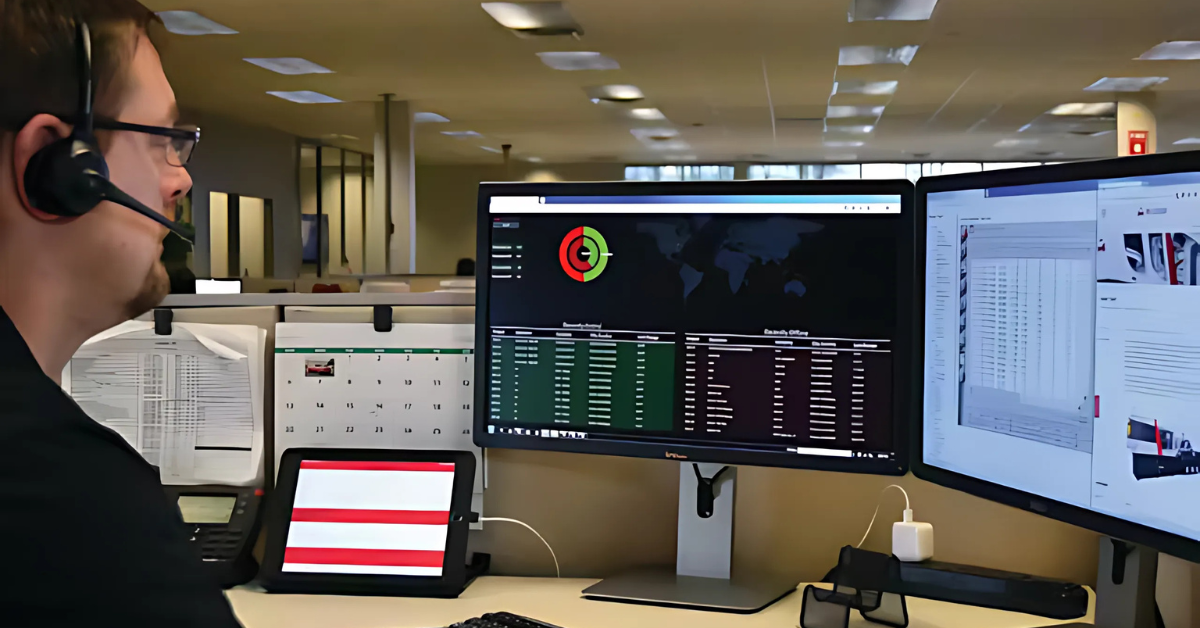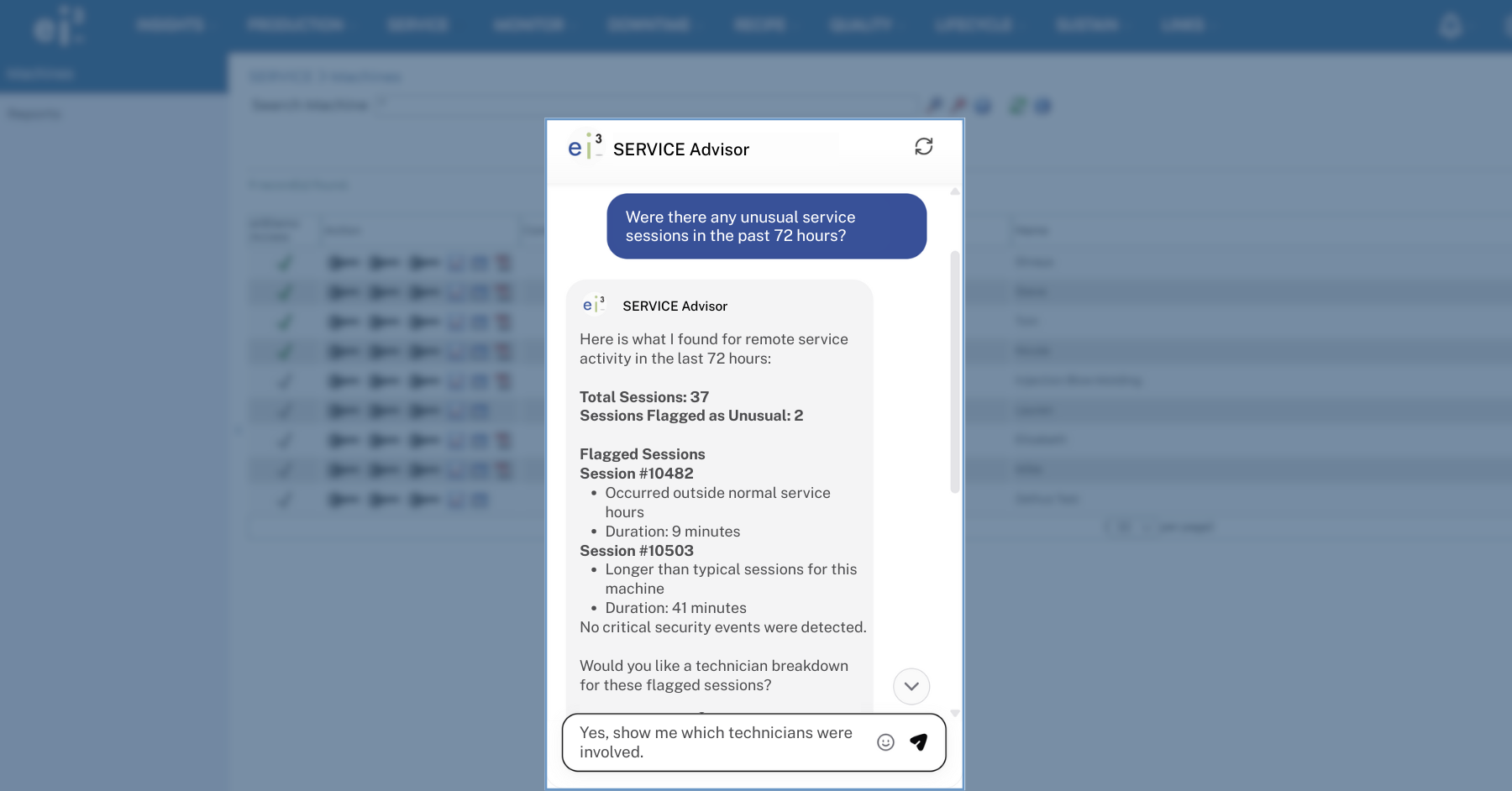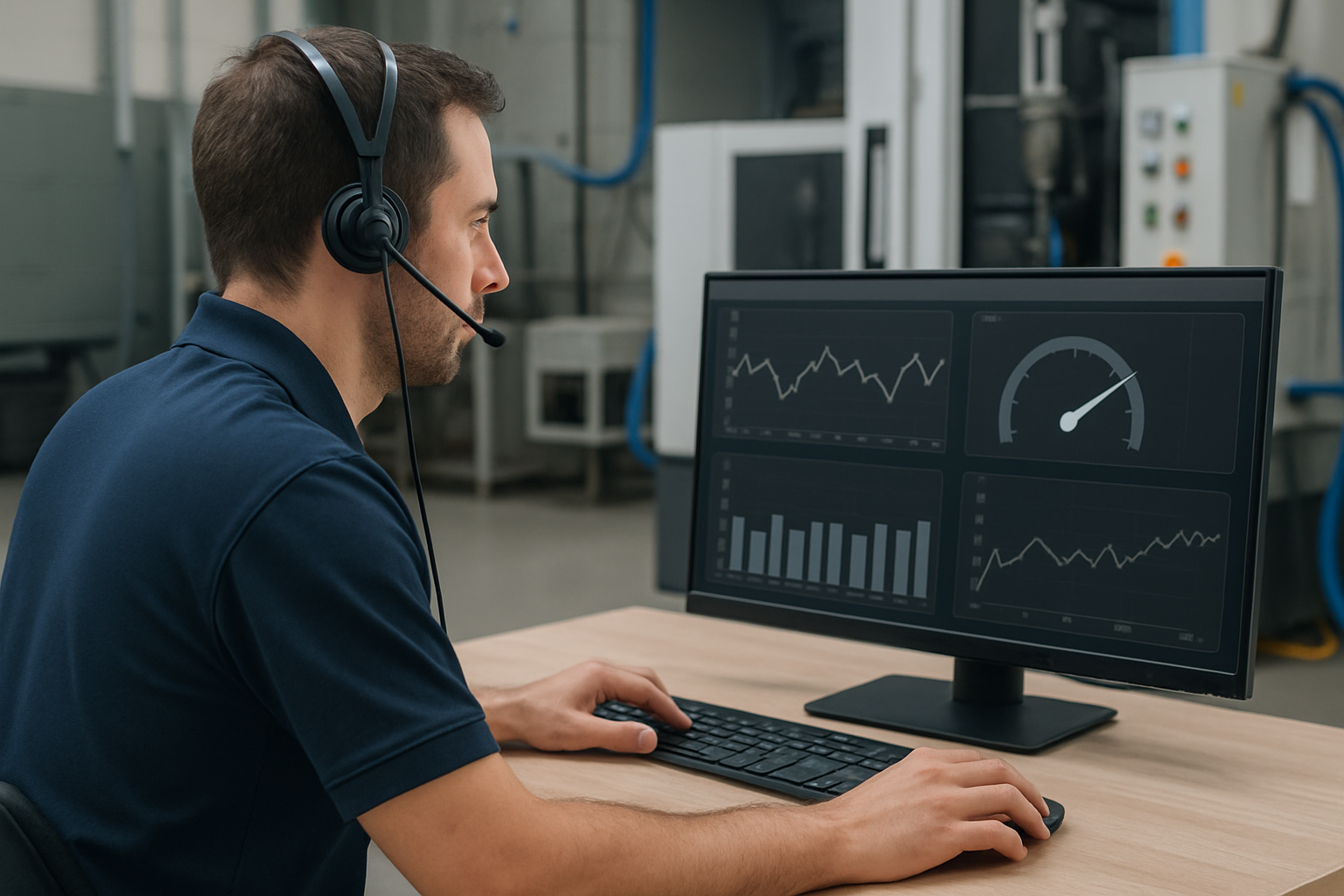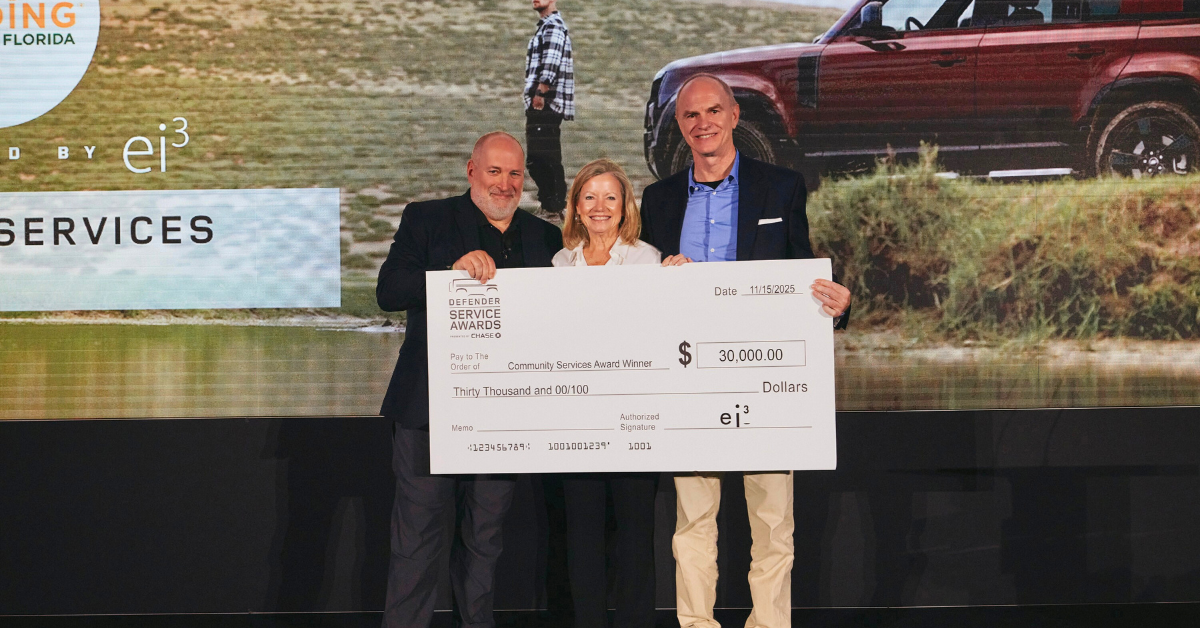Today more than ever, manufacturers are trying to squeeze every drop of productivity out of the assets they already have. Machine builders can help them achieve the OEE they're looking for.
On the whole, manufacturers understand the importance of measuring overall equipment effectiveness (OEE). It exposes losses within their operations to better drive the decisions for improvement. It's about finding bottlenecks, improving efficiency, and reducing downtime—and squeezing as much productivity as possible out of existing assets.
The push for digital transformation
The trend toward tighter capital has been in place for a few years. But this year, more than ever, the COVID-19 pandemic is pushing more manufacturers to get serious about their digital transformation to achieve the agility and flexibility needed from their machines. And OEE is a great place to start.
Improved OEE can not only help manufacturers increase productivity, it can help them react to changing demands in the supply chain. When suddenly one product is sold out everywhere (toilet paper, say) while another sees a significant drop in demand, manufacturers need to be able to adjust. They need to understand if existing equipment can handle a rise in demand.
"If you're not collecting the OEE information, or not looking at what's going on on the shop floor, you don't have the data to understand where you're at now, or if you have a change in demand, if you can meet it."
Matt Giordano, Rockwell Automation
You might have the capacity on some machines but not on the line overall. Or you might be constrained by a particular operation on the line. "Until you start looking at that stuff, you're going to be struggling to adjust."
This year has been a wakeup call for a lot of businesses, Giordano adds. "We need to understand what's happening here so we can manage through these difficult times."
And that's where OEMs are in a position to help, especially when it comes to incorporating new technology that will move manufacturers toward a more information-driven future.
An essential for IIoT
For any manufacturer looking to start an Industrial Internet of Things (IIoT) initiative as part of their digital transformation, OEE is the go-to key performance indicator (KPI) to get the ball rolling. It's tangible and relatively easy to measure, and can boost productivity right out of the gate.
Too many IIoT programs are overzealous from the start, getting everyone excited about big dreams. When they don't deliver the planned ROI, the project gets canned and people get cynical about what benefits IIoT might actually provide.
The real-world impact of focused OEE improvement:
- Deliver $2 million in the first six months
- Gain 20 points of OEE in the first year
- Continue incremental improvements in following years
"OEE helps move people along the IoT arc. You get the hard cash returns of productivity."
Luke Durcan, Schneider Electric.
OEE is an essential first step for getting the data that's needed to start digital transformation.
"You can't really start to do a digital transformation until you understand what's going on on your shop floor," Giordano emphasizes. "You need data. You need to understand what's happening."
Starting with the basics
Edward Jump, M-Powered IIoT digital analytics leader for Milacron, has seen a shift over the past few years where more customers have established ways to efficiently track OEE in some capacity.
"There's a varying range of what that means for customers, but it is a metric that most of the industry is starting to utilize and measure themselves," he says. "But even companies that measure it, they still struggle with writing things down on clipboards, and not having accurate information because it's relying on somebody saying a machine was down for two hours when it was really down for four hours."
There are still a large number of plants just beginning to enter the digitalization age, but it doesn't need to be a big leap. Jim Hulman of Bosch Rexroth advises a pragmatic approach:
- Gather fundamental OEE data
- Find your biggest problems first
- Implement simple solutions
- Look for ways to predictively identify issues
"You don't need much data analysis or machine learning or any of that to solve a 14% discrepancy in OEE. It's just simple analysis—walking it through, identifying the issue, and getting the team together to solve it," Hulman says.
The great equalizer
Once you've tackled smaller issues, taking OEE across the operation can bring considerable gains. As Schneider Electric's Durcan puts it:
- Understanding OEE on a particular machine is interesting
- Understanding OEE on a particular cell is useful
- Understanding OEE across the entire plant reveals critical bottlenecks
It's the critical bottlenecks in a facility that drive productivity. This concept, which Schneider Electric refers to as "production synchronicity," looks across assets to synchronize OEE. "Everyone knows what their bottlenecks are," Durcan says. "It's the synchronizations between bottlenecks that drive productivity."
Production synchronicity integrates OEE and data to study more complicated relationships between OEE and productivity across an entire facility. An OEE issue together with a starvation event upstream could send an alarm to an engineering or production manager, giving them "a window to get in and maintain productivity."
"OEE becomes the great equalizer."
Dan Sileo, FSO Institute
Too often, manufacturers default to measuring pounds produced on a given machine. But this approach becomes difficult at a corporate level because production variables differ significantly between products. "The dollar delivery is different. The waste numbers are different," Sileo notes.
Manufacturers with multiple plants can find themselves talking dollars when looking at machine performance. But it always makes sense to look at OEE instead. "It's dangerous when you talk dollars because you're not recognizing the complexities in each plant," Sileo argues. "Then you let the complexity or differences in plants become excuses."
The machine builder's place
With manufacturers looking at OEE across a workcell or even the entire plant rather than just machine by machine, where does the OEM fit into this equation?
OEMs can participate in OEE improvement in multiple ways:
- OEE as a validator for machine performance
- Building "OEE-ready" equipment with appropriate logic and tags
- Providing service elements to help customers maximize machine performance
Milacron, for example, has taken the initiative to help its manufacturing customers get a better handle on OEE by partnering with ei3.
"Where the machine builder comes in—or where we come in anyway—is by trying to help gather that information, to automate it, to get it into a true system," Jump explains. "And then by really listening to the customer about what their problems are and then focusing on those specific areas of OEE and tailoring our solution with our partner ei3 to help them tackle those unique problems."
Milacron uses ei3 technology as the backbone of its M-Powered IIoT suite to make sure it has a secure and reliable connection to remotely troubleshoot customers' assets. "If certain downtimes are continually plaguing our customers or certain components are affecting their downtimes, we study those and we put things in place with ei3 to quickly deliver to our customers what they need to do to improve that score," Jump adds.
Take it to the cloud, or the edge
Higher-level analytics often rely on cloud services to crunch complex data across the enterprise. But OEE is also becoming more powerful with edge technology, which lets you "bring intelligence down to the operator."
Milacron's data science approach combines both:
- Initial data collection and analysis in the cloud
- Pattern identification across hundreds of connected machines
- Development of predictive algorithms based on observed patterns
- Deployment of optimized algorithms to edge devices (supplied by ei3)
This approach allows for comprehensive analysis while minimizing continual data transmission to the cloud.
A cautionary tale
Providing a machine with a high OEE score is one thing. Making sure your customer understands what can affect the machine's OEE is another.
Bosch Rexroth's Hulman shares an example: An OEM partner sells a machine with 95% efficiency rating, featuring fully automated changeover that handles 200 different product configurations. When a customer reported only achieving 85% efficiency, the problem turned out to be upstream, beyond the control of that particular machine.
There are many variables outside the machine builder's control once the equipment is on the customer's floor:
- Operator training
- Proper maintenance
- Upstream and downstream machines
- Material variations
"The best thing for an OEM to do is to sit down with the customer and get a common understanding of what OEE means to them," Hulman advises. "If I'm supplying you a machine that has 95% efficiency, these are the parameters that I'm basing that on."
OEE will point you to the problem, but it doesn't necessarily give you the solution. "So it's very important for an OEM to clarify their understanding of OEE and which parameters are outside of their control," Hulman concludes.
Make OEE work for you
Measuring OEE enables manufacturers to:
- Identify underlying losses in their equipment
- Benchmark progress
- Improve productivity
However, OEE itself doesn't hold all the answers. Manufacturers need to dig beneath the surface to find the causes of any given OEE score.
"Tracking is just the beginning," Rockwell Automation's Giordano says. "That score can guide you as to where you want to look next."
The real value comes not just from measuring OEE but from committing to use the information it provides. "Just because you throw an OEE number up on the TV doesn't mean it's automatically going to improve. There has to be a cultural change as well, a commitment to use it," Giordano emphasizes. "If you don't continue to use it, you'll start to lose value in it."





